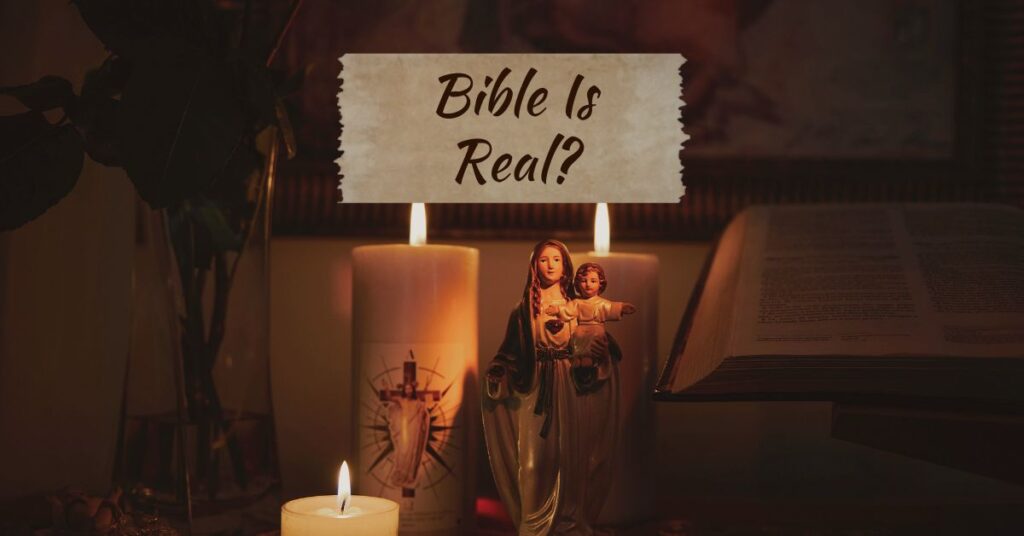For centuries, people have asked: Is the Bible real? Is it a collection of myths, or is it based on real events, places, and people?
Whether you’re a believer seeking reassurance or a skeptic searching for facts, there’s good news: both history and science provide compelling evidence that the Bible is real—and incredibly reliable.
Let’s explore what archaeology, manuscripts, and even science say about the world’s most-read book.
1. Historical Accuracy of the Bible: Real People, Real Places
The Bible doesn’t shy away from naming places, kings, and dates. And many of these can be historically verified.
Examples of Confirmed Biblical History:
- King David – Once thought to be legendary, his name was found on the Tel Dan Stele (9th century BCE).
- Pontius Pilate – A stone inscription with his name was found in Caesarea, Israel.
- The Hittites – Once dismissed as a biblical myth, they were later discovered through archaeological digs in modern-day Turkey.
The Bible describes real geography—cities like Jericho, Jerusalem, and Babylon have been uncovered, proving the text reflects accurate knowledge of the ancient world.
2. Archaeology Supports the Bible’s Claims
Thousands of archaeological discoveries have supported biblical details. While not every story has physical evidence (yet), many align with what the Bible describes.
Notable Finds:
| Discovery | What It Confirms |
|---|---|
| Dead Sea Scrolls (1947) | Ancient biblical texts nearly 2,000 years old |
| Pool of Siloam (John 9) | Site of Jesus’ healing miracle |
| Walls of Jericho | Evidence of sudden collapse around 1400 BCE |
| House of Caiaphas | Home of the High Priest who tried Jesus |
Archaeology may not “prove faith,” but it powerfully confirms that the Bible is rooted in real-world history.
3. Manuscript Evidence: The Bible is Textually Reliable
One of the strongest arguments that the Bible is real lies in its manuscript history.
Did You Know?
- There are over 5,800 Greek manuscripts of the New Testament.
- Compared to other ancient texts (like Homer’s Iliad or Plato’s works), the Bible has far more copies and closer to the original date of writing.
Comparison Table:
| Work | Earliest Copy | # of Copies |
|---|---|---|
| Plato’s Dialogues | ~1,200 years later | 7 |
| Homer’s Iliad | ~400 years later | 643 |
| New Testament | ~30–50 years later | 5,800+ (Greek alone) |
This makes the Bible the most reliably preserved ancient document in history.
4. Science and the Bible: More Agreement Than You Think
The Bible is not a science textbook, but it often aligns with scientific truths discovered later.
Examples Where the Bible Precedes Science:
- Shape of the Earth – Isaiah 40:22 describes the Earth as a “circle” long before it was common knowledge.
- Ocean currents – Psalm 8:8 refers to the “paths of the seas,” later confirmed by oceanographers.
- Laws of sanitation – Leviticus gives detailed health laws thousands of years before modern hygiene science.
While not every scientific question is answered in the Bible, it contains surprisingly accurate insights for an ancient text.
5. Prophecy Fulfilled: A Supernatural Fingerprint
Another powerful reason to believe the Bible is real is its fulfilled prophecy.
Messianic Prophecies Fulfilled in Jesus:
- Born in Bethlehem (Micah 5:2)
- Betrayed for 30 pieces of silver (Zechariah 11:12)
- Crucified with transgressors (Isaiah 53)
There are over 300 prophecies in the Old Testament that Jesus fulfilled. The mathematical odds of one man fulfilling them all by chance? Astronomical.
6. The Bible’s Impact: Changing Lives and Nations
Beyond facts and history, the Bible’s power lies in how it transforms lives:
- It’s been translated into over 3,500 languages.
- It’s inspired human rights, education systems, and justice movements.
- Millions today credit the Bible for inner peace, healing, and purpose.
A book doesn’t last thousands of years and change hearts worldwide unless it’s something more than a myth.
Conclusion
So, is the Bible real?
Yes—historically, archaeologically, and spiritually. From ancient scrolls to modern transformation stories, the evidence is overwhelming: the Bible is real, reliable, and still relevant.
Whether you’re reading it for the first time or the hundredth, it continues to offer truth, hope, and purpose in a world that desperately needs it.
FAQ’s
1. Is there proof that the Bible is historically accurate?
Yes, archaeology and historical records support many events, places, and people mentioned in Scripture.
2. How do we know the Bible hasn’t been changed?
Thousands of ancient manuscripts show consistent text over centuries, confirming its preservation.
3. Can science and the Bible agree?
Yes—many scientific discoveries align with biblical truths, showing harmony rather than conflict.

